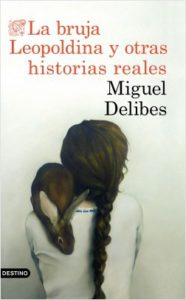The work of
Miguel Delibes
The work of
Miguel
Delibes
Novels
of Miguel Delibes
La sombra del ciprés es alargada (The long shade of the cypress)
Destino, 1948
Miguel Delibes opens up his lieteray career with two of his narratives constancts: childhood and death. With his first novel, “La sombra del ciprés es alargada”, he wins the Nadal award in its foruth edition-1947-.
The protagonist and narrator of this novel, Pedro, becomes an orphan and is entrusted to a lame tutor who is also a professor, Mr.Lesmes, whose motto in life is to be suspicious of everybody and never get to close and have deep feelings or affections, so in this way he would never experience the sadness for the loss of a beloved person. Which is exactly what happened to the kid, Pedro, to whom the Death takes away his best friend, Alfredo, and after the woman who he had fallen in love with. The Death is represented in the shade of the cypress, “which can cut like a knife”, and is the witness of the whole story and the feelings of the characters.
The writer dedicated this novel to his parents, his wife and his son Miguel, born in 1947, the first of his seven children.

Aún es de día (It is still daylight)
In “Aún es de día”, the second novel of Miguel Delibes, Sebastián, who is a mentally distressed and por man, suffers the mocking of his neighbours and he is even tricked by the girl he had fallen in love with and to whom he dreamed to get married one day. He tries to overcome all these issues with a rich interior life but the roughreality breaks through and is stronger than his spirituality.
This novel thoroughly portraits the city life of a province of the last century, during the inmmediate Spanish postwar period.
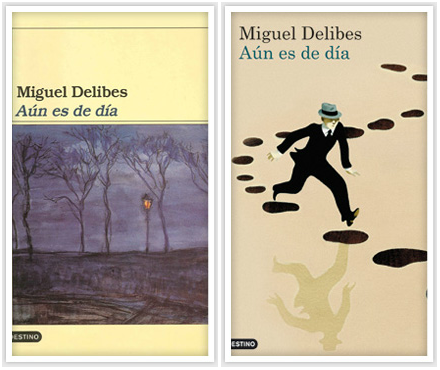
El camino (The path)
In “El camino”, the tirht of the novels of Miguel Delibes is where he finds is voice and his personal style, according to his own confession.
Childhood is again the central theme of this novel. The village of Molledo de Portolín in Cantabria, the place where Delibes spent his childhoos and also the origin of his father´s family roots, serves him as inspiration for this novel.
Daniel, el Mochuelo, the eve before he left his hometown to go to the cty to begin with his studies, evokeshis elen years in the village where he spent his childhood together with his close friends, Roque, el Moñigo, and Germán, el Tiñoso. The adventures of these three kids, whose friendship is also truncated by the death of one of them as it also happened in “La sombra del ciprés es alargada”, fill the pages of this wonderful story that shows a mixture of tenderness and a subtle sense of humor combined in perfect harmony with the characters and their environment.
Delibes´ narrative style fresh and direct, take special mastery in this work.
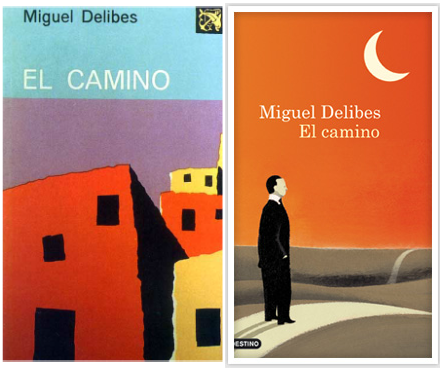
Mi idolatrado hijo Sisí (My beloved son Sisí)
Mi idolatrado hijo Sisí” is one of the most ambitiuos Works of Delibes either in content as well as in its form.
It also presents a narrative novelty the historial contextualization that the novelist makes throughout the news that he takes from the newspapers.
The novel is divides in three books that recreate three different and consecutive periods of theSpanish history of the XIX century-1917-1920; 1925-1929; 1935-1938-. The novel tells the story of Cecilio Rubes, a trader in the capital of a province, he is a catholic only in appearance and with a tipicl upper-middle class mentality, whose selfishness makes him conform with only having one child that he spoils and toletares everything, but he will brutally lose his child to the Spanish Civil War.
The novel is a clear moral satire in which Delibes, with subtle irony snd without any prejudism censors the Malthusianism, creating at the same time one the unforgetteable characters that he he gave life.
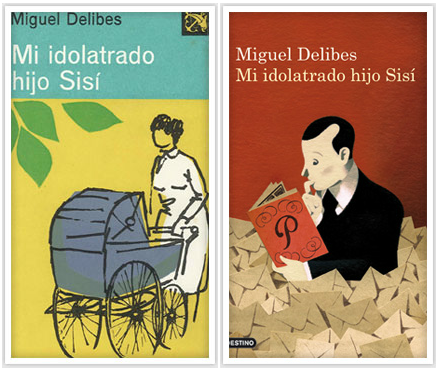
Diario de un cazador (Diary of a hunter)
Destino, 1955
Miguel Delibes obtains the National Literature Award for the novel “Diario de un czador”, which he started on the 5th of January of 1954- as it recalls his ahndscript- and published on March of 1955.
The protagonist of this novel, Lorenzo, janitor of a High School and a hunter, jots down in his diary with an expressionist language full of nuances and popular expressions, not only his hunting adventures but also all the aspects that involve his modest live with his mother, a widow, and his girlfriend Anita, whom he eventually would get married, but not in this novel.
Miguel Delibes pointed out that Lorenzo, the protagonist of “Diario de un cazador”, “Diario de un emigrante” and “Diario de un jubilado”, had been so far the most optimistic and cheerful character that he had created.

Diario de un emigrante (Diary of an emigrant)
Destino, 1958
Miguel Delibes confessed that he wrote this novel inpired by his visit to Santiago de Chile in 1955, and after Reading during his trip his own novel “Diario de un cazador”, which had just been printed.
Lorenzo, the hunter, this time already married to Anita, emigrates to Chile in the search of a better living, since the poverty and limited opportunities that Castilla offered were a fact.Throughout a scarce year that this adventure lasts, Lorenzo would keep on writing down in his diary all the details about his settlement in that new country and his adaptation to the new customs, his little quarrels with his wife, the surprising new use of the Spanish language, his dreams and expectations but also the uprooting , the strangement of those who are forced to leave their own country and the final deception to the impossibility of achieving a wealthier living.
It is amazing the mastery of the novelist to make his own the way of speaking of the Chilean people, whose funny and diverse vocabulary is step by step incorporated by the character of Lorenzo and to his peculiar way of speaking too.
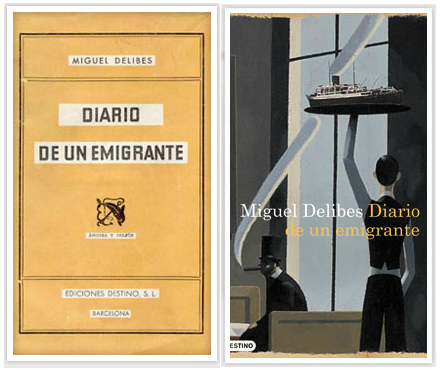
La hoja roja (The red paper)
Destino, 1959
The moving carácter of this novel, Mr.Eloy, repeats over and over again that he got the red page in the “rolling smoking paper package” of life, referring to the page that back then-during the fifties of the XIX century- used to come in the smoking paper packages that smokers used to roll his cigarettes, and that meant that the paper were about to be finished. Either with this expressive metaphor, either with his same old story that “retirement is the preface to death”, Mr. Eloy, retired, old and forgotten by his only child, shares his life with a maid of the village, Desi, who had also lost the only person she had some kind of attachement, so she feels lonely and abandoned as the old man.
Mr Eloy and Desi are the protagonist of a story of despair that spins around the old age, loneliness and despair, although, all this is softened as usual with the tenderness, the restraint lyricism and the balsamic sense of humor that Delibes gives to his most pathetic stories.
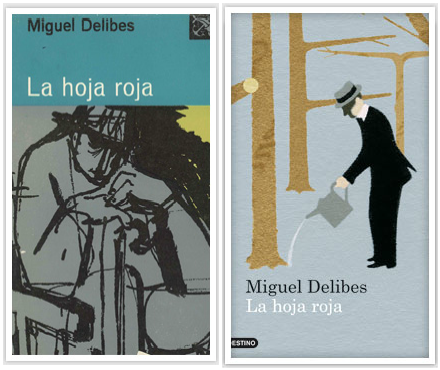
Las ratas (The rats)
Destino, 1962
Since Delibes felt cut off in his expression to condemn the subjugation of the rural life in Castilla, from the newspaper that he runs El Norte de Castilla, he tries to dodge the censorship and he writes this novel. “Las ratas” is a rough and tragic vision of the regions and people of Castilla during the first half of the past century.
The atmosphere, the geographic situation and the unchangeable social structure determine in a decisive way the existence reason of the inhabitants of the village in this novel whose extreme poverty forces them to hunt and eat rats from the river nearby to survive.
Among all the characters of the story who are rather intellectually simple and rude, arises the character of Nini as if he was a miracle, since he represents diring the whole novel the only hope against the tragedy that sourrounds the village and its inhabitatnts. Nini is no doubt one of the most representative creations of Delibes.
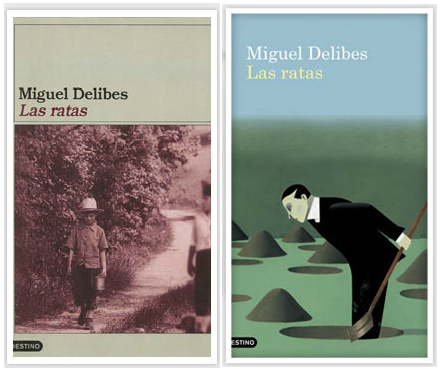
Cinco horas con Mario (Five hours with Mario)
Destino, 1966
Carmen Sotillo, Menchu, has just lost his husband, Mario and she is having a wake on his corpse all night long. Some underlined paragraphs in a Bible that Mario kept on his bedside table unchain in Menchu a wave of memories and a very dense and disorganize monologue in which she revises their life together, including all the details of understanding and misundertandings between them. Menchu´s upper- middle class mentality makes a contrast with the liberal and non-conformist but committed character of Mario, so she critizises those aspects all along the novel.
As a matter of fact, and according to Delibes´own revelation, this formula of the interior monologue adopted by the novelist in this work, responded to the exigencies of the censorship of those times, since if he had presented Mario as a living character, defending the ideas that his widow reproaches, the novel wouldn´t have obtained the approval of the censors.

Parábola del náufrago (Parable of the castaway)
Destino, 1969
The novel “Parábola del naúfrago” is a literary experiment and it is in fact an athypical and isolated case in Delibes´narrative.
This work apart from being a harsh critique to the totalitarian regimes, independently of what sign they respond to, it also contains a formal satire against the theories of the destruction of the language which were prevailing at the time of the publishing of the novel and that Delibes recreates not only with the indescriptable invented language of the protagonist but also with the signs of punctuations at the start of the novel and here and there all along the novel.
As if it was the literal transcription of a nightmare, Delibes narrates for us the life, the sinking and the final silly transformation into a fool of Jancinto San José.
Secluded in a Recovery Refuge of Don Abdón S.L., symbol of the autocrat and patronising power, Jacinto San José, an admiring calligrapher and expert in calculating figures, has to carry out a strict medical cure, since he starts getting dizzy when he draws the number zero, he also gets mistaken with the Os, he also is obliged to this cure since he invented and promoted the movement for “ going mute for peace” and its correspondant language and to feel sorry for the “Doggy” degrading of his friend Genaro Martín.
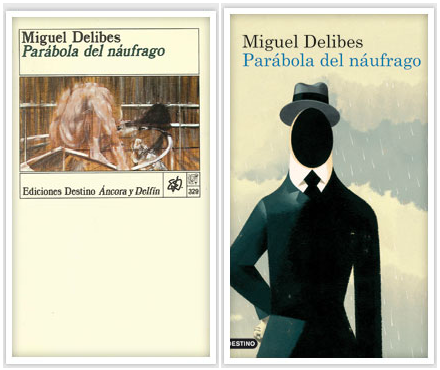
El príncipe destronado (The deposed prince)
Destino, 1973
In 1973 comes out “El príncipe destronado” a novel which Delibes wrote in 1964.
Quinco, a three year old boy, sees how he is suddenly ousted when his little baby sister is born. And all his efforts, as many other children in his circumstances, were call the attention of everyone and stand out, and to continue being the center of attention of the grown ups, especially his mum.
“El príncipe destronado” is just a detailed story- hour bu hour- of a normal day in the routinary life of Quico and his family. But the novel is at the same time a portrait of the family relationships and conflicts in particular those of the father and the mother who live during the postwar period- when the novel is set, and from very different points of view: the side of the winners and on the other hand the side of the defeated. The cinema version of this novel that will be adapted by Antonio Mercero reflects in its title this aspect of the novel “la Guerra de papa” (“Dad´s war”).
Miguel Delibes offers in some of his novels admirable and full portraits of protagonist that are children. In the case of little Quico the writer reaches a peak in his mastery to describe and recreate the children´s soul and spirit.
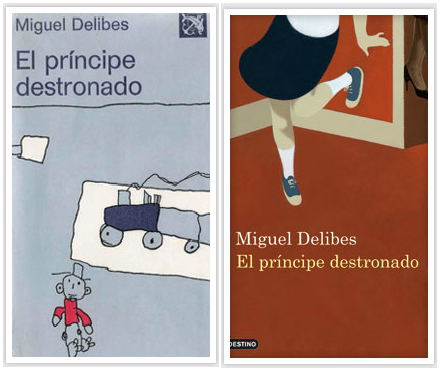
Las guerras de nuestros antepasados (The wars of our ancestors)
Destino, 1975
This novels takes form of a dialogue, in which the convict Pacífico Pérez, convicted for homicide, reveals to the doctor of the prison his life and his feelings. All along the interrupted story of this young man from a small village who possess an amazing sincerity and candor and who is extremely sensitive, the reader gets to know and discover the truth about a confronted and violent country and society that is not able to live generation after generation without a war to fight. “Each man has his own war as he has his own woman”, this is the conclusion that naïve Pacífco reaches who at the end, victim of a society to which he didn´t know and he couldn´t adapt to, will die crushed by those who determine the rules in that society.
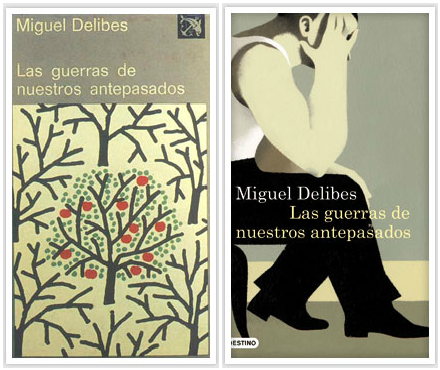
El disputado voto del señor Cayo (The disputed vote of Mr. Cayo)
Destino, 1978
Mr.Cayo lives in a village that is practically in ruins, in the village live only two neighbours that do note ven talk to each other. One day three members of a political party arrive to the village to do electoral propaganda coinciding with the hold of the first democratic elections.
The categories of the old peasant-Mr. Cayo- his shooting way of speaking, his wisdom about the land and life in general have a huge contrast with the rough and rough language of the newcomers, with their temporaryplans and proposals, in this way the y clearly show the contrast between two worlds and two cultures that ignore each other: one is slowly disappearing and the other is noisy, is a cliché and is overcrowded and it is coming to substitute the later. The novel is prove and a satire of the antithesis between the two conceptions of life and even of history, but once again in this story, the tenderness and melancholy of Delibes humanize the loss of the world symbolized by Mr. Cayo.
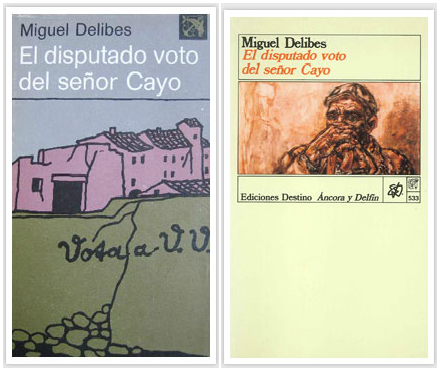
Los santos inocentes (The innocent saints)
Planeta, 1981
Los santos inocentes is narrated almost in psalm disposition with an organization of the text in a poem like typography. This is the novel of the submission and humiliation of the defeated that arises at the same time in a statement against the powerfull and in favor of the abandoned and the forgotten.
It is divided in six books, as many other epic works, this tragic and at the same time lyrical story narrates the dramatic existence of a marginal person who lives in a cortijo (country property) of Extremadura and whose subjugation to the master of the house determines his miserable life.
The characters of Paco, el Bajo and the “innocent” Azarías, with his “beautiful white tailed kite” are two the characters with which Delibeas reaches another peak in his career.

Cartas al amor de un sexagenario voluptuoso (Love letters of a voluptuous sixty year old)
Destino, 1983
A retired sixty year old man one day found in a magazine, at the waiting room of the doctor´s office, and advertisement of a 56 year old widow who requested to exchange letters with gentlemen of maximum 65 years old and similar situation to hers. Eugenio Sans Vecilla make his own the proposal and starts sending letters to the woman and so a mail correspondence begins between them, although the novel only shows the letters sent by the man (protagonist)
These letters bit by bit reveak the stingy personality of the man and the past and the present of a selfish and pretentious old bachelor who the only idea that he has about love are the unrealistic dreams that the exchange of letters produce in him.The novel ends with a final malicious surprise perhaps a bit cruel, that can remind us of the adventure and pieces of news related to the gossiping social life and that perhaps leaves the bitter taste of human loneliness and how difficult can sometimes be the relationships for human beings.

El tesoro (The treasure)
Destino, 1985
El tesoro is once again another novel about the clash between the city life and the countryside life: the typical representation of the kindness of the rural life versus the malicious of the court.
In this novel the peasant of an unknown place in Castilla in whose land has been found a prehistoric “treasure”, oppose to the scientific workof a group of acheologists that arrive to the place to study and catalogue the finding. The ignorance and greed of those primary peasants- Delibes keeps on condemning the abandoned situation of the countryside of Castilla- only let them be suspicious and they can only see in the expents sent by the public administration, a group of thieves that arrive to steal what belongs to them.
To write this novel, Delibes was inspired by true events that had as protagonist a group of archaeologist very close to him.

Madera de héroe (To have what it takes to be a hero)
Destino, 1987
Originally the title of this novel was “377A, to have what it takes to be a hero”, but later on Miguel Delibes decided to reduce the title to make it clearer.
This novel contains many autobiographical details-377A, for instance, was the number that Delibes receibed during his enlisting period in the cruise “Canarias” in his military service at the Spanish Navy, and can be considered as one of the most ambitious and prolific of the castillian writer.
Gervasio García de la Lastra- image of the child and teenager that Miguel Delibes was and his group of friends at the time when the Spanish Civil War was declared- experiences a strange phenomenon every time he listens to military music: he gets goosebumps on his neck. This strange oddity is interpreted by great part of his family as a kind of genetic tendency to become a hero, nevertheless later on it will be proven that this singularity was a sign of quite the opposite.
With this expressive anecdote, Miguel Delibes narrates with great mastery the adventures of several characters that see themselves involved in a war that was unannounced but will leave a mark on them forever, exactly what happened to the novelist and all the people around him.

Señora de rojo sobre fondo gris (The lady in red over grey background)
Destino, 1991
A prestigious painter who was inmerse in a deep creational crisis starts evoking for his daughter who recently had come out of prision, several memories that spinned around two main events which were decisive in his life: the detention of his daughter and her husband due to political issues and above all, the illness and sudden death of his wife.
Again with a strong autobiographical load-Delibes pays a tribute to his wife who passed away in similar circumstances in 1974-, the novel is about an intense and unstoppable love story toward death but also a portrait of a woman transformed into a character, with an extraordinary human personality.
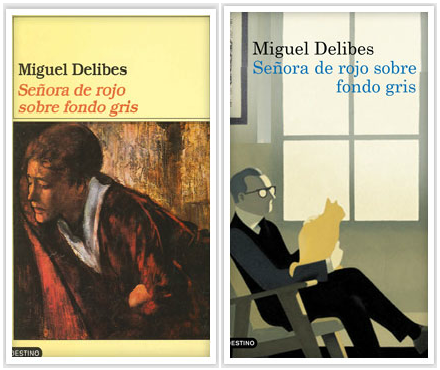
Diario de un jubilado (Diary of a retired man)
Destino, 1995
Lorenzo was first the hunter in “Diario de un cazador” (“Diary of a hunter”), 1955, then he was an emigrant in Chile in “Diario de un emigrante” (“Diary of an Emigrant”), 1958, and now, fourty years after his firsts adventures, with his shotgun on his shoulder around the wastelands of Castilla, he comes back to become the protagonist of this third novel at the age of seventy and already retired from a automovile factory.
Miguel Delibes had always wanted to transform Lorenzo into his literary alter ego and make him practice the sports that he practiced and growing older with him. Nevertheless, due to his dutty to pay attention to other characters and circmstances, four decades had passed by without going back to this dynamic and foul-spoken hunter who, according to the writer, was his most optimistic character. Lorenzo, that primitive human but warm hearted and simple ambitions, apart from getting retired, during all these years has seen himself dragged by the consuming society, this fcat gives Delibes the opportunity to harshly critizise the fake and materialistic world of out time.

El hereje (Heretic)
AÑO: 1998
Heretic is the last novel published by the author. This novel is dedicated to “Valladolid, my city”and it represents, according to the words of Miguel Delibes, his most complex and ambitious novel.
In the same year that Luther provokes the schism in the Roman Church, 1517, was born in Valladolid Cipriano Salcedo, son of a wool tradesman and who would become a tradesman too and manufacturer of clothes, that due to some sentimental reasons, more that moral ones, joins the protestant cult which was founded and lead in Valladolid by Doctor Cazalla. The Spanish Inquisition cuts off completely this religious schism and condems to burn alive all the followers, Cipriano Salcedo amongst them.
The human and spiritual adventures of this honest man, another looser in the gallery of characters of Delibes, serves the writer to make a mastery recreation of the city of Valladolid at the time of Charles the first, of its people and costums and of the political and religious agitations of that time, but avobe all, it represents the fight of the human beigns to reach the truth and defend his freedom of mind.
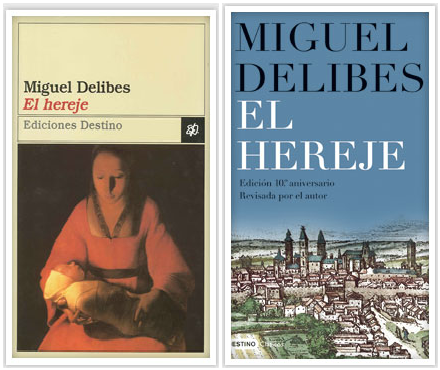
Fiction works-tales
of Miguel Delibes
La partida (The Departure)
La Partida is the first tale book of Miguel Delibes.
The plot of the tales is generally based on personal experiences of the author or on very close situations to him. “La partida”, is the tales that provides the title to this book which contains ten different short stories, for instance the enrolling of a young man in a merchant ship and which has plenty of autobiographical features, when he remembers the experiences of thenovelist in the Spanish Navy during the Civil War. These experiences also appear in novels such as “The long shade of the cypress” or “To have what it takes to be a hero”.
They are part of this collection of talesthe following short stories:
- “La partida” (“The departure”)
- “El refugio” (“The shelter”)
- “Una peseta para el tranvía” (“One nickel for the tram”)
- “El manguero”
- “El campeonato” (The championship”)
- “El traslado” (“The transfer”)
- “El primer pitillo” (“The first cigarette”)
- “La contradicción” (“The contradiction”)
- “En una noche así” (“On a night like this”)
- “La conferencia” (“The conference”)
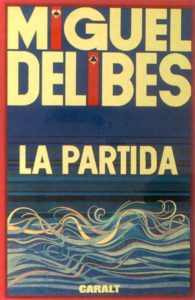
Siestas con viento sur (Naps with south brise)
This piece is formed by four short stories, two of them of an urban atmosphere, “El loco” (The madman”) and “Los raíles” (“The railways”) and another two of rural armosphere, “La mortaja” (“The shroud”) and “Los nogales” (“The walnut trees”).
In “El loco” a boring bank worker tells his brother about his obsession he has after by chance meeting a man who he suspects could be linked to the family history and past and even related with the violent death of their father.
In “los raíles” the biographies of Teo and Tim, Grandfather and grandson respectively, run parallel as the railways do but with different ambitions and goals. Both of them consume their lifes trying to become the maître of a hotel, the grandfather, and a lawyer the grandson, but they will never be successful.
In “La mortaja” a child, Senderines, is the protagonist of abandonment and loneliness story. All his innocence and frustration get together to try to dress the dead body of his father, who had unespectedly died. All the people around him try to to get advantage of the helpless situation of the poor boy without even trying to help him.
“Los nogales” tell about the relationship Nilo, the father, the best tree-shaker of the region, and Nilo, the son, a disabled person who is uncapable to continue with the job of his father. Death is here again the central topic of the narrative of Delibes, and finally tragically reaches its highest point at the end of this story.
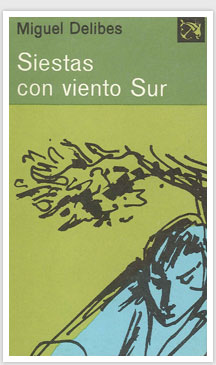
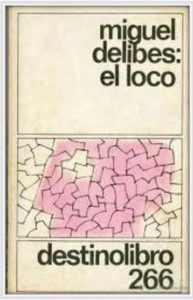
Viejas historias de Castilla la vieja (Old stories of the old Castilla)
Isidorois the narrator and protagonist of these “old stories”, he emigrated to America and returned to his village after 48 years living abroad and he recalls his memories of what his village was and it is nowadays, a village in the beginning of the XX century. This story presents on the one hand the poverty, the steadiness, the routine and the superstition and on the othe hand the settlement and sense of belonging, the personal relationships and the close contact with the environment and nature.
Irony and tenderness, subtle complaint and deep sympathy are mixed in these scenes, told in a clean and precise style, from a wise knowledge of the catillian rural environment in the geographical as well as the human side.
Miguel Delibes always considered this tale as one of his favourite.
The stories that form “Viejas historias de Castilla la vieja”, together with some illiustrations of Jaume Pla, were published for the first time in 1960, with the title of “Castilla”, only 150 copies were published the first time. Later on these stories were published by Lumen in more number of copies with photographs of Ramón Masats.
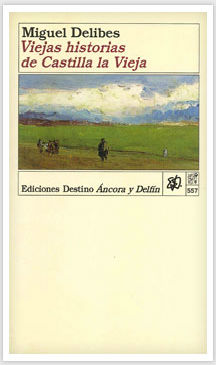
La mortaja (The shroud)
Alianza Editorial, 1970
“A mortaja” is a short story which serves as the title for this volume formed by nine tales, this is one of the most intense and dramatic stories of Miguel Delibes in which we can find in a very clear way his four constant themes: childhood, the death, nature and “the others”.
In these stories- “La mortaja”, “El amor propio de Juanito Osuna”, “El patio de vecindad”, “El sol”, “La fé”, “El conejo”, “La perra”, “Navidad sin ambiente” and “Las visiones”- it catches the attentions the wide variety of narrative voices that Miguel Delibes displays with great mastery.
The short story of “La mortaja” was published the first time in 1957, as part of another volume called “Siestas con viento sur”.
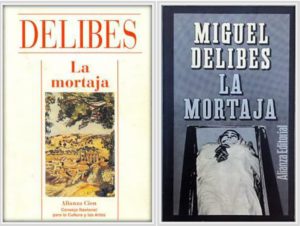
Viejas historias y cuentos completos (Old stories and complete tales)
Menoscuarto, 2006
This work compiles in a single piece of narrative work the tales, short stories and short novels of the author.
This work was re-edited together with “Viejas historias de Castilla la vieja”, and compilations like “La partida”, “Siestas con viento sur”, “La mortaja” or “Tres pájaros de cuenta y tres cuentos olvidados”.
Gustavo Martín Garzo in the preface of this compilation considers several of these short stories as little master Works of the allusion and suggesting in which we can find “some of the most beautiful pages ever written in the Spanish language”.

Otros cuentos (Some other tales)
“Envidia” (“Envy”) is a little book of small format that was published in the 50´s in the Enciclopedia Pulga of Ediciones G.P.,that including the tales which serves as title for the novel also includes another four titles: “El duro”, “El otro hombre”, “La broma” and “La perra”. The last title was later on included by Delibes himself in another volume of short stories called “La mortaja” (1970).
“La babería” (“The barber shop”) is a tale also publish during the 50´s in the Enciclopedia Pulga, and was re-edited in 1999 by the Publishing house Ediciones la Corredera. In this edition was also included de discourse of acceptance at the Premio Cervantes.
The tale “La milana”- the base for what later on will become the first boof of “Los santos inocentes”- was published by Delibes in 1963 in the magazine Mundo Hispánico and afterwards was used in different critic publishings.
Three tales of the 50´s- “El otro hombre”, “La vocación”and “Bodas de plata”- were published in 2003 by the Publishing house RqueR inside another volume with the title “Tres pájaros de cuenta y tres cuentos olvidados”.

La bruja Leopoldina y otras historias reales (The witch Leopoldina and other real stories)
Destino, 2018
It gathers for the first time in a volume the autobiographical narrations of Miguel Delibes already published in My life in the open air and Three birds of account. The reader will find in them, as protagonist, the most cheerful, optimistic and endearing Delibes, as a child and as an adult, accompanied by his family and friends, in the city and, above all, in the countryside, and will be able to enjoy through his view of nature and sports.
This edition is accompanied by La bruja Leopoldina, a little unpublished gem, written and illustrated by Delibes with only eighteen. This finding, along with some splendid texts, but not very well known, will serve to discover the essence of one of the most read and influential authors of Spanish letters.
